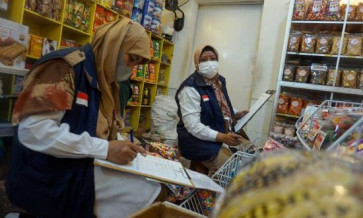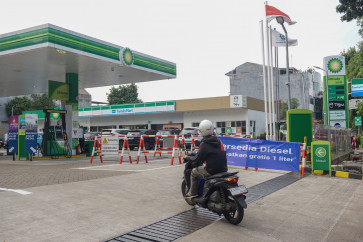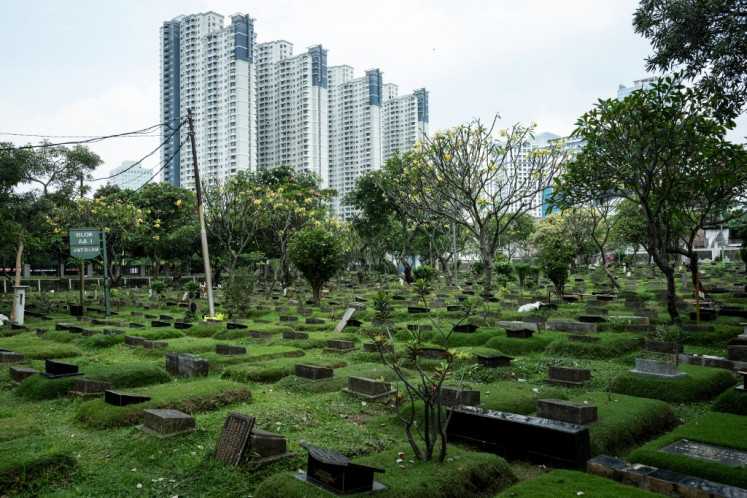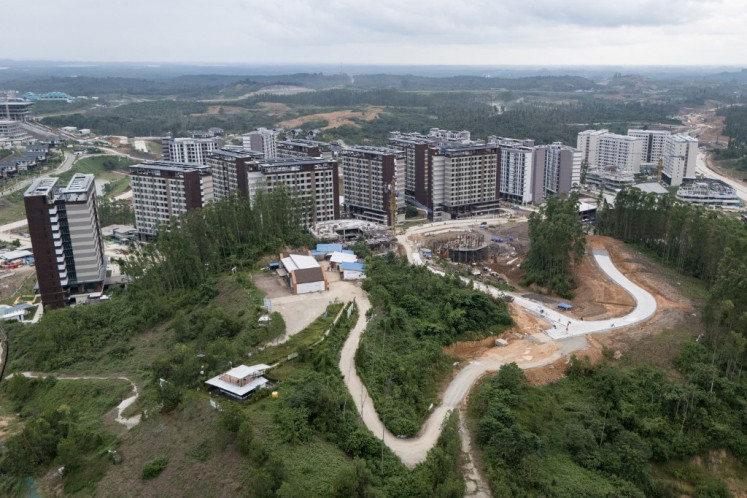Popular Reads
Top Results
Can't find what you're looking for?
View all search resultsPopular Reads
Top Results
Can't find what you're looking for?
View all search resultsAdapting to climate change: Learning from the grassroots
The significant negative impacts of climate change have become an interest shared not only on an international and national level but also on a local community level
Change text size
Gift Premium Articles
to Anyone
T
he significant negative impacts of climate change have become an interest shared not only on an international and national level but also on a local community level. Farmers in rural areas face the negative impacts of climate change in the form of harvest failure, the reduction of farming production and also the degradation of the quality of the farming environment.
Food shortages are the main result of the negative impact of climate change in many producing countries. Searching for better strategies to cope with food shortages, which is closely linked to food security, is a great concern among many parties.
In general, local farmers were perceived as lacking the knowledge and technological access to cope with various losses in their farming businesses, which were caused by extreme varieties in climate elements such as rainfall, wind speed and direction, length of sun light, and so on.
However, under particular circumstances, local farmers have the capability to produce knowledge and action for adapting to and mitigating climate change. For a long time, local innovators have been working with fellow local farmers in managing farming practices. Based on their past experiences and their actions, they could produce several strategies, such as adaptation methods, to reduce the negative impact of climate change.
We should give appreciation to local strategies in adapting and mitigating climate change, which have been developed by local and indigenous knowledge and wisdom. Promotion and development of local strategies to cope with climate change will be very useful for local communities as they attempt to maintain the sustainability of farming production.
Modern science could learn from local knowledge that was produced and developed by local people. The strategy can be utilized and modified with modern strategies that hopefully will be more effective and beneficial for local farmers.
Our recent study on farmer adaptability, with climate change impacts for farming, confirms that farmers working in the sandy farming coastal areas of Kulon Progo regency, Yogyakarta province, can be categorized as innovative farmers that have a high capability in terms of adapting to climate change.
From the beginning of 1980s, farmers living alongside the coastal area of Kulon Progo have cultivated farming crops on sandy land. Chili is a common crop planted by famers. Naturally, it was not easy to cultivate on sandy land characterized by a very extreme environment, with strong winds and very hot day time weather. However, local farmers have worked considerably hard and gradually have been able to manage farming crops.
In addition, the climate in the last two decades has fluctuated, causing a lot of negative impacts on farming practices and hitting productivity of crops in coastal areas. On a local scale, coastal farmers applying accumulated local and indigenous knowledge and adapting the innovation from outside parties have realized particular adaptive behaviors to overcome negative impacts resulting from climate change.
Several farming strategies to cope with climate change that have been developed by local farmers embrace things such as seedling varieties, diversifying farming products, planting wind breaker crops, maintaining strong rooted bush for holding sand, utilization of land coverage, selection of fences to strengthen crops, introduction of effective pipe-watering systems, modification of planting schedules, the development of farming groups for farming input provision and the development of auction markets.
After farmers met extreme weather on many occasions when they were attempting to grow many varieties of chili, finally in the 2000s they were able to identify the most resistant chili variety to extreme rainfall. Although rainfall tended to be more frequent and bigger in quantity, by utilizing resistant crops, farmers still could manage production stability.
In order to protect crops from strong winds and moving sands, farmers introduced wind breaker crops as fences and also functions for feeding grass for livestock. They also maintained particular strong rooted bush for holding sand. There is an agreement among local people not to cut bush for livestock feeding. Farmers also introduced the strategy to make artificial fences from bamboo combined with rope to protect crops from strong wind.
Farmers are also concerned with the instability of the production of chili. In order to maintain production stability and cash income, farmers grow various crops in between the main crop, such as corn, egg plant, long bean and mustard. This strategy is regarded as crop diversification.
Great water evaporation is type of sandy land in coastal areas. To solve the problem, farmers introduced land coverage with plastic covers and straws. In addition, farmers found new systems for effective watering using pipes. Those strategies helped farmers to maintain humidity, which was very important for raising agricultural crops.
Use of land coverage and watering pipes can also extend planting schedules. It is common that during rainy season, farmers in other places will stop cultivating chili as it is quite risky. But, farmers in coastal areas can still maintain their crops. A lack of production supply during the rainy season has become a blessing for farmers in coastal areas in terms of obtaining higher prices.
Farming group arrangements for production input provision and the development of auction market areas are also an innovation of local farmers. Those strategies could strengthen the bargaining power of local farmers and to some extent minimize the negative impact of the instability caused by extreme climate change.
Learning from grass root experiences, local and national governments and related agencies could promote appropriate strategies that will be beneficial for local farmers. Local and indigenous knowledge could possibly be improved using modern science approaches and could even be imitated globally.
The promotion of local innovators is needed and can possibly be used as an agent for socialization and also for dissemination to other communities in reducing the negative impacts of climate change. Related government agencies should also introduce reliable predictions on climate change and appropriate strategies for how to cope with it.
Subejo is a graduate from the University of Tokyo. Supriyanto is a graduate from the University of Ghent, Belgium. Both are lecturers in the School of Agriculture, Gadjah Mada University, Yogyakarta.










